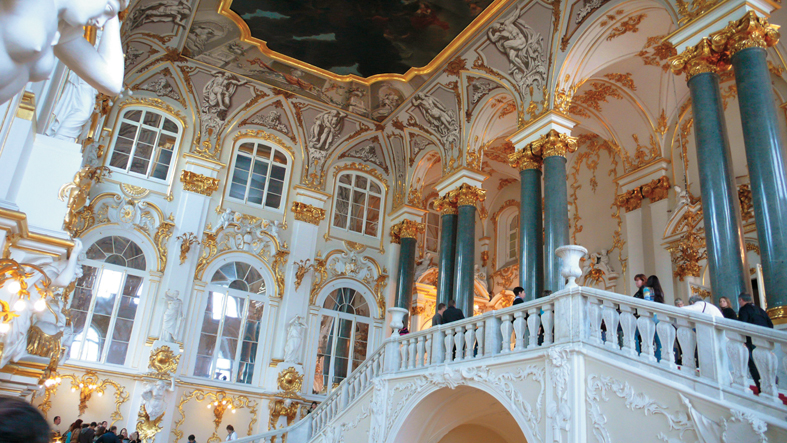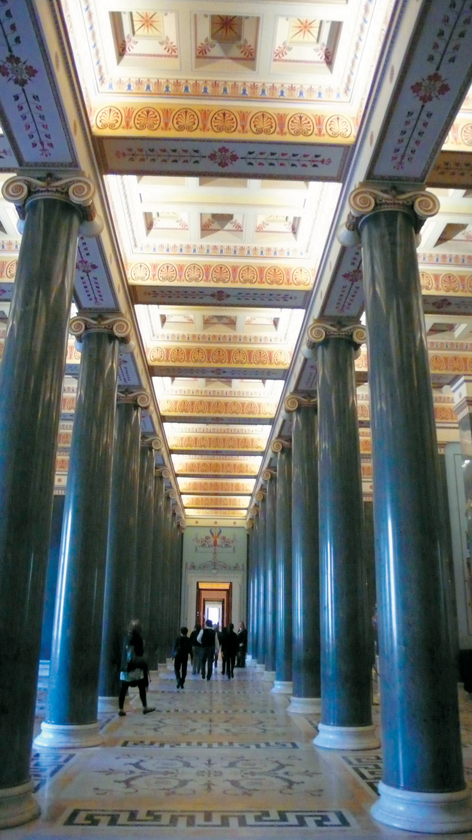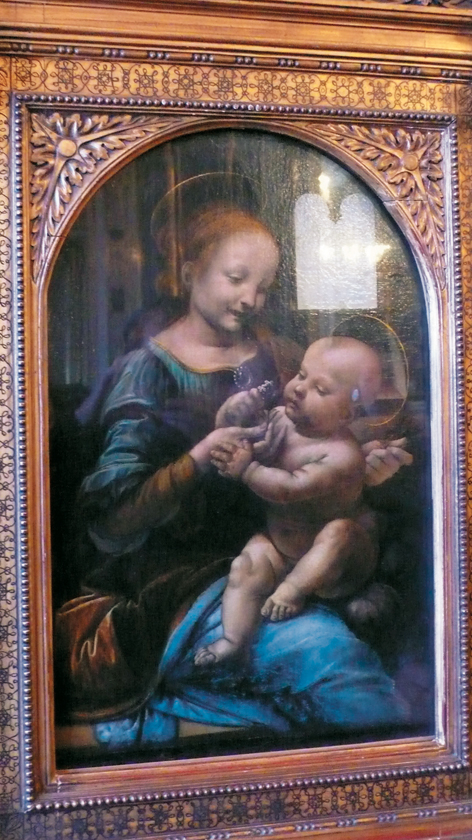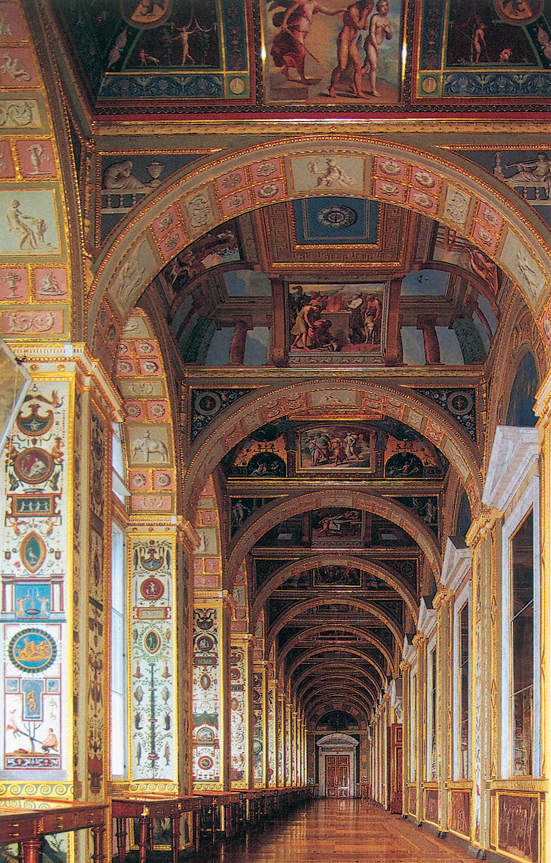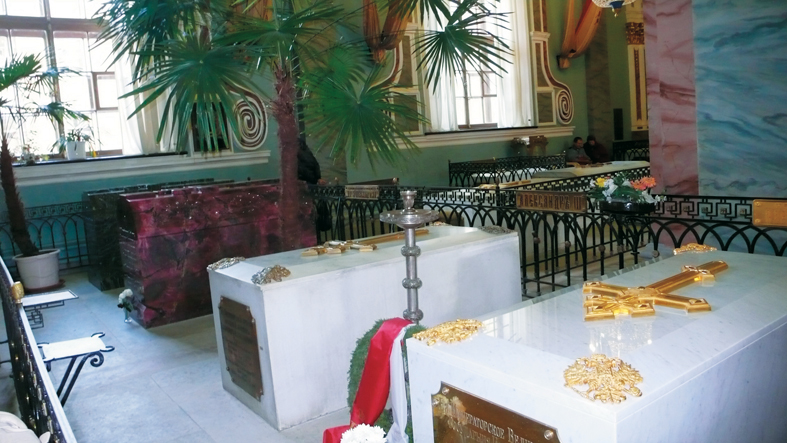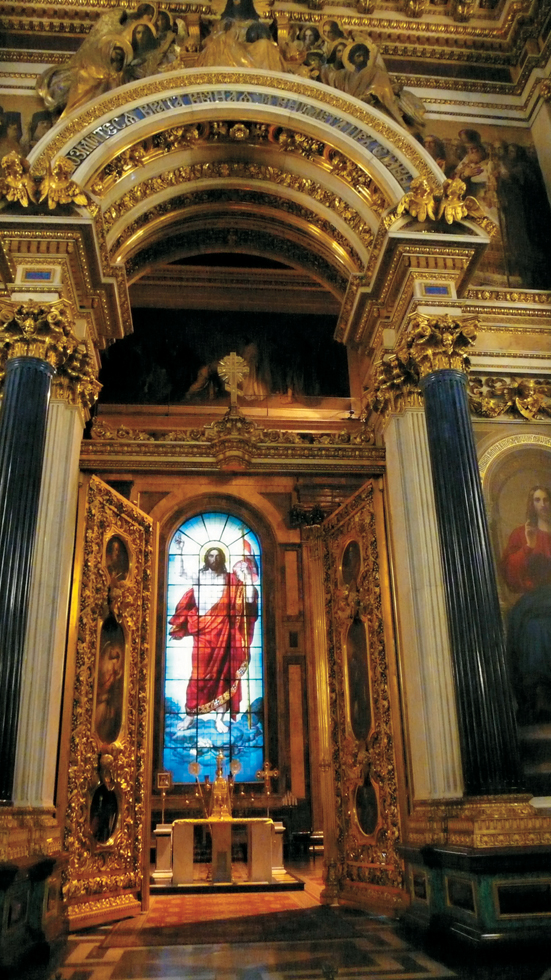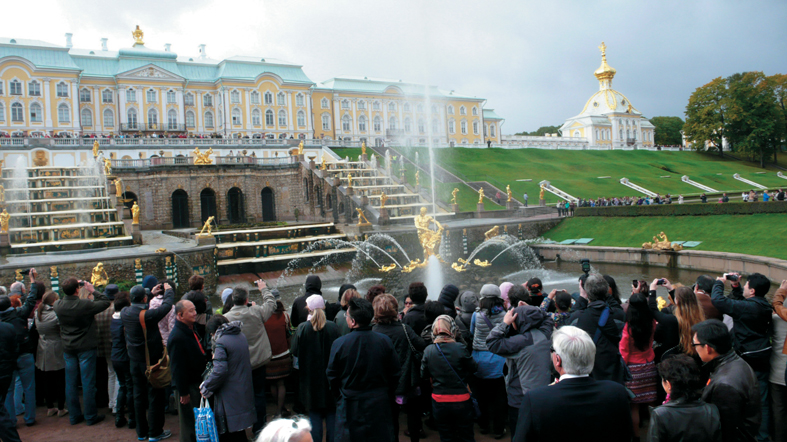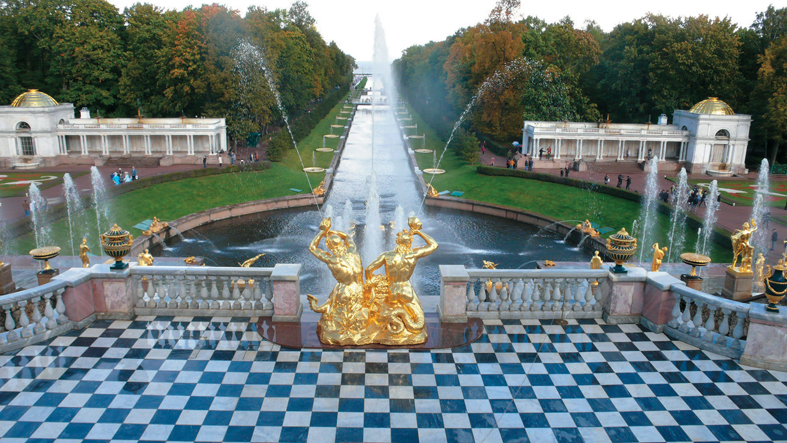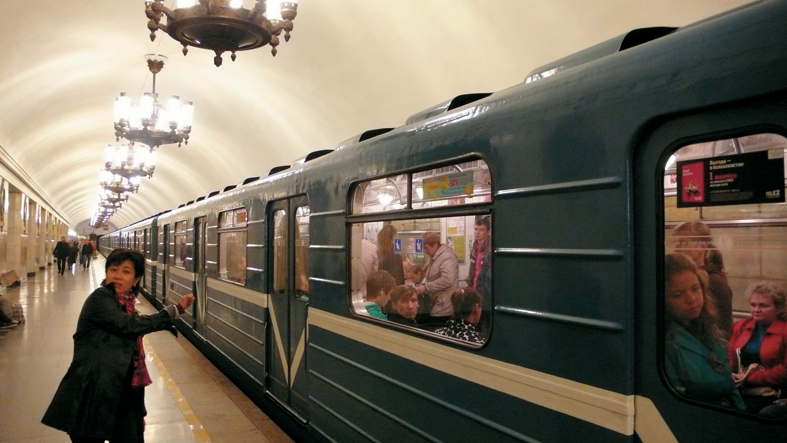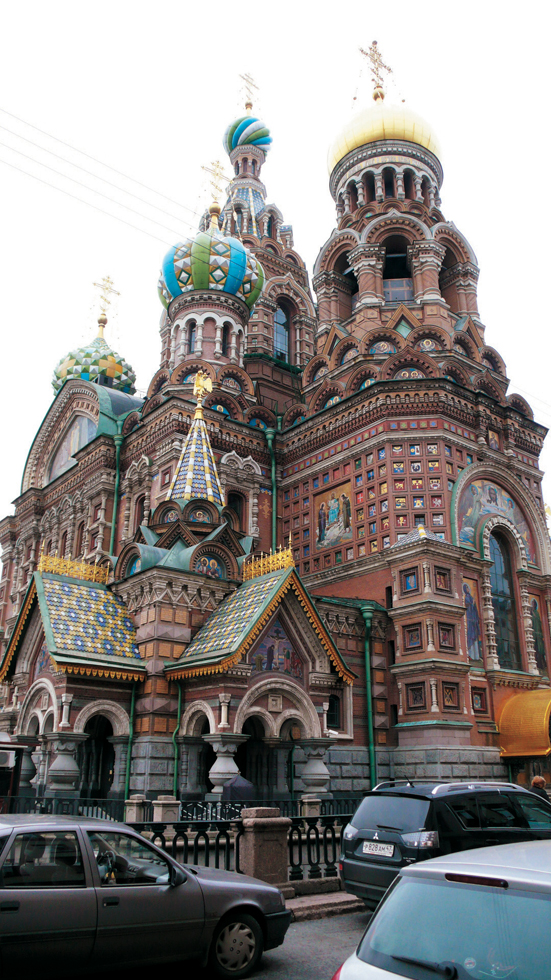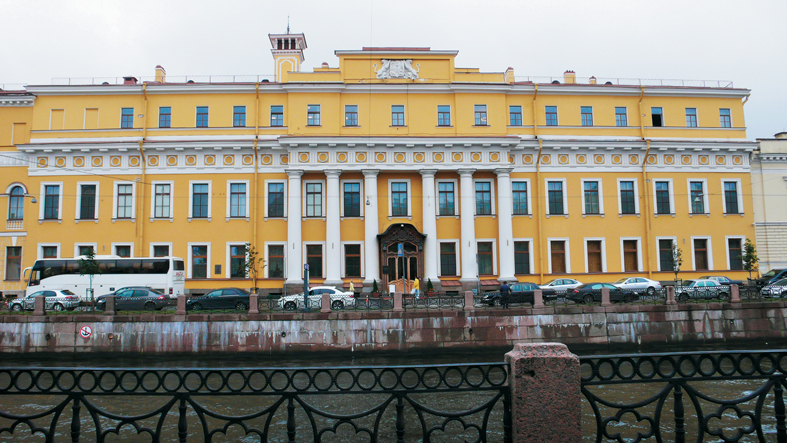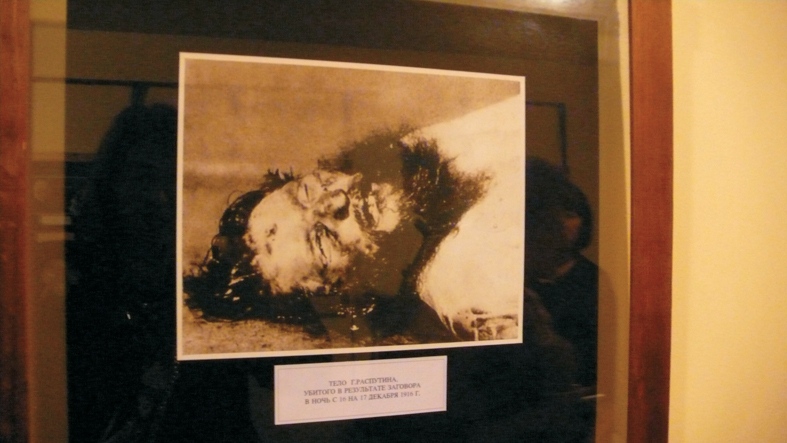“The city with colors resembling the eyes of its empress”
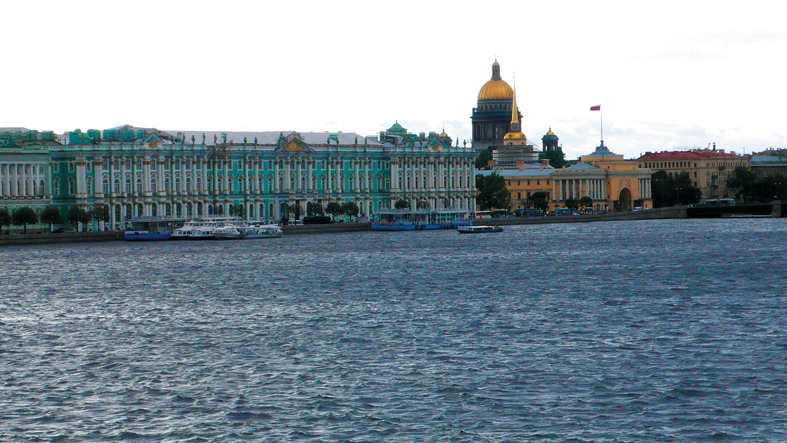
© Prestige
It is true that St. Petersburg was founded in 1703 by Peter I the Great but it was the two empresses Elizabeth 1st and the Great Catherine II who embellished it and made it the cultural capital of Europe. In St. Petersburg, it rains almost every day of the year. Sunny days can be counted on the fingers of one hand. In addition to the fabulous snowy landscapes and wonderful artistic sites of the city, the legend says that its buildings are painted in a light color, resembling the eyes of its empresses. Prestige takes you to St. Petersburg, the “Venice of the North” to explore its thousand and one wonders.
The Hermitage Museum
This is one of the most imposing group of palaces in the world. It includes five buildings overlooking the quay of the Neva, connected by galleries and passages. Hosted by ten massive gigantic figures of Atlanteans carved on the entrance portico, the tourist enters the museum from the New Hermitage. He will be fascinated by the beautiful carvings decorating the roof and porches along the entries of the Winter Palace. With its thousand one hundred rooms, this palace is the monument of Empress Elizabeth Petrovna. It remained the main imperial residence until 1917. Following the revolution, it housed various organizations before being assigned to the Hermitage in 1922. At Old Hermitage, are the collections of Catherine II and her library, and the famous lodges of Raphael. At the small hermitage, visitors are dazzled by the beautiful collection of paintings of Catherine II. As to the Hermitage Theatre built in 1789 to replace the theater Rastrelli,, it stands on the site of the former Winter Palace of the Grand Peter 1st. We are seduced by the beauty of its interiors and paved courtyard recreated in1990.
© Prestige
The Parade staircase of the Hermitage.
Presidents Vladimir Putin, Dimitry Medvedev and Boris Yeltsin and Gorbachev, Andropov, Kosygin, Khrouchthev, Stalin and Lenin are all from St. Petersburg.
The collections of the Hermitage Museum
The Hermitage is one of the most important art museums in the world. More than three million of exhibition articles illustrate the evolution of the universal culture from the twentieth millennium BC until today. Visitors are impressed by the magnificent collections from various arts, antique, European, Russian, Egyptian, Persian, that are exposed.
The paintings Gallery
The Hermitage Museum is famous for its magnificent collection of paintings which include more than 3,000 works of all schools of ancient Europe: Dutch, Flemish, Spanish, Italian, French, English and German. We find beautiful paintings of Leonardo da Vinci, Michelangelo, Rembrandt, Rubens, Renoir, Cézanne, Manet, Monet and Pissarro; paintings by Van Gogh, Matisse and Gauguin, as well as fabulous sculptures of Rodin.
Exhibition of Ancient Art
Given its fabulous collections of Ancient Art, the New Hermitage is one of the most popular places in Russia. While climbing up the Nikolayevsky stairs, the tourist finds at the top level superb doors giving access to the front room. Paintings by the German Georg Hiltenspenger are exhibited in the gallery of the history of ancient painting, and fine works of great neoclassical sculptors like Antonio Canova, Bertel Thorvaldsen, Lorenzo Bartolini … are presented. When we go down the stairs Nikolayevsky to the ground floor, we arrive in 18 rooms where there are beautiful art collections: beautiful Egyptian Antiquities in the small room, other antiques in the rooms with elegant decor, and the masterpieces of Italian art of the early period of the Middle Ages in the gallery of the Old Hermitage.
© Prestige
The room with twenty columns.
The succession of pageantry of the Winter Palace
Created by Rastrelli, great master of the spatial composition, the succession of pageantry rooms of the Winter Palace dazzles visitors with its magnificent interior richly decorated. Indeed, Rastrelli had time to finish only a part of the decoration of interiors. During the reign of Catherine II, he was dismissed from his functions of court architect on instances of Ivan Belsky .The decoration of the rooms was pursued by Vallin de la Mothe, Velten, Rinaldi and Quarenghi . The latter transformed the theater and the throne room in apartments for the heir Paul and his son Alexander. Which destroyed the row ceremonial design introduced by Rastrelli. Following the fire which destroyed all the interiors of the Winter Palace in 1838, the building was fully restored. Two ceremonial successions appeared in the palace, as well as five rooms including room Marshals, the Throne Room, the magnificent Golden Hall of Arms, the Gallery of 1812 and the marble throne room. Given their sumptuous décor, these rooms attract thousands of tourists coming to admire their beauty and discover their historical and artistic value.
The Leonardo da Vinci room of the Old Hermitage
Decorated in the middle of the nineteenth century, Leonardo da Vinci room is a beautiful living room decorated with different marbles: Porphyry, lapis and jasper. Tourists are fascinated by the beauty of the interior: precious wood flooring, painted panels, gilt bronze, doors in the Boulle style inlaid with decorative elements in gilt bronze and tortoiseshell … In this room two masterpieces of Leonardo da Vinci are exhibited: Madonna Benois, Madonna Litta.
© Prestige
Madona Benois of Leonard da VinciPalace of Constantine
The Palace of Constantine or ” Palais des Congrès ” in 2003 received more than fifty heads of state during the tercentenary celebrations of St. Petersburg. In 2006, it hosted the 32nd G8 Summit. During these summits, Presidents of State were welcomed into 18 luxury homes overlooking the sea, each bearing the name of a historic Russian city. Beginning in 1720 on a draft prepared by Niccolo Michetti, the construction of the palace stopped in 1723 and the architect returned to his country. The pieces of furniture belonging to Peter I the Great were kept in the lower rooms of the unfinished building. In 1797, Paul I gave the domain of Strelna to his son Constantine and the palace which took his name, was then completed by the architect Luigi Rusca. A terrace with Poudost stone was built along the front overlooking the Gulf. The palace passed in 2000, under the auspices of the administration of President of the Russian Federation.
Raphael Lodges
Redesigned in 1780 by the Italian architect Giacomo Quarenghi under the control of Catherine II, the museum of the Hermitage or ” Loges du Vatican ” are characterized by similar lodges to those of the Vatican. Visitors are attracted by their sacred inside: copies of Raphael’s Bible, more than 50 paintings depicting the Old Testament and four other the New Testament, as well as ornamental compositions in the grotesque style decorating the walls. At the gallery of ” Lodges of Raphael,” there are two genuine works by Raphael, treasures of all collections of the Hermitage, and the crouching boy of Michelangelo, another jewel of the Hermitage collections and unique work of this famous artist in Russia.
© Prestige
Raphael lodges
Saint Peter’s and St. Paul Cathedral
Tsar Peter I the Great wanted to give Russia an opening on the Baltic Sea and a naval force. In 1703, he put on Zaïatchii island in the delta of the Neva, the first stone of a new fortress he called ” Saint- Petersburg “. In this fortress was built St. Peter and St. Paul’s Cathedral. It was the first college built in stone. At the top of its spire 123m high, stands an angel holding a cross that will be one of the most important symbols of St. Petersburg. In this cathedral are the remains of tsars and tsarines of the Romanov dynasty of Peter the Great to Nicolas II. Indeed, Tsar Nicolas II and his family were shot in SIberia in 1918 and thrown into mass graves. In 1990, they found their bones and they were transported to the cathedral and buried in the Chapel of St. Catherine of Martyrs.
© Prestige
The tombs of Tsar Peter 1st the Great and Tsarina Catherine 1st.
St. Isaac’s Cathedral
Being among one of the largest religious buildings in the world, St. Isaac’s Cathedral is topped by the largest golden dome in the world. A whole host of artists such as Karl Brioullov ,Fidor Brouni, Vasily Chebouïev Ivan Vitali, Nikolai Pimenov and Piotr Klodt, participated in the painting and sculpture works in the cathedral. The sculptures are made according to the method of electroplating which is to reduce the weight of the enormous bronze statues and reliefs. The paintings adorning its beautiful interior were replaced by mosaics since changes in temperature and humidity have damaged them. After his consecration in May 30th, 1858, Saint Isaac’s Cathedral received the relics of St. Andrew, the icon of the Holy Face with its gold coating, copies of the miraculous icons of the Virgin of Tikhvin and flag of the militias in 1812.
© Prestige
Stained glass of the choir: ” The Resurrection of Christ.”
© Prestige
The Summer Palace of Peter the Great and its famous musical fountain.
Parks of Peterhof
Extending over thousands of hectares of waterfront land,Peterhof parks are characterized by their magical beauty. The lower park is one of the largest parks in the baroque style in the world. Tourists are enchanted by the magical ambience of these places. Large flower beds are arranged symmetrically at the base of the Great Cascade. They are decorated with two basins with in the center, a large marble cup from which flows a stream of water. In the driveway of Marly, the longest avenue of the park, there is a bronze statue of Peter 1st the Great, as well as Adam and Eve fountains decorated with marble sculptures.
The fountains of Peterhof
Renowned for its unique fountains in the world, Peterhof or the ” Capital of Fountains ” attracts thousands of tourists who come to look at the fabulous fountains. These fountains operate daily from May until October. They are officially open to the public on the last day of May, during a lively festival animated by several artistic performances.
Samson Fountain
Being among the most powerful water jets inPeterhof, Samson reaches more than 20m in height. At the time, the caretaker Paul Sualem built a special pipe fed by a pond on the heights of Babigon to ensure the power of the jet. In 1799, Tsar Paul I ordered to replace the lead sculptures distorted with time by other bronze statues quite identical.
© Prestige
The Fountain of the Pyramid
Considered the most picturesque fountain of Peterhof, the Pyramid attracts a large number of visitors. Designed by Michetti, it was inspired by the famous Obelisk Fountain at Versailles. Pyramid has more than 500 water jets of different heights while the Obelisk Fountain has half of these water jets.
The Great waterfall
This is one of the largest group of fountains in the world. Composed of more than 60 fountains located around 250 statues, Great waterfall is considered one of the pinnacles of art fountains seen its rich ornamentation, and the power and diversity of water jets. It is also a typical ” Italian staircase “: water flows tablecloth wide steps disposed gradually and paved with marble, tufa and shells, then falls into a large basin. Two caves, on the upper and lower sides,with decorated interiors as ” natural cave ” are arranged on the slope between the stairs.
The Marble Palace
Catherine II the Great asked Antonio Rinaldito build the Marble Palace for her favorite, Count Grigory Orlov . It was he who had helped her mount the coup against her husband Tsar Peter III in 1762, and take the throne to become the Empress Catherine II the Great. But Catherine ii was not Russian, but German princess. She was chosen by Elizabeth 1st as a wife for her nephew, the future Tsar Peter III.
St Petersburg Subway
Common transport in St. Petersburg, the metro runs at a great depth, between 20 and 30km, due to the geology of the basement of the city. It transports daily more than 3 million passengers and has more than 60 stations. Some stations run under the river Neva and its branches. Decorated with marble and granite, these stations are illuminated by more than 700 lighting elements – chandeliers, candelabra and bronze sconces, crystal and decorative glass. The first metro line in St. Petersburg, with a length of 10,8km, was opened in 1955.
© Prestige
The church of Saint-Sauveur ” On the Spilt Blood ” It includes the most beautiful mosaics
Renowned for its exotic appearance, the Church of the Savior ” on the Spilt Blood ” drains many tourists. It is built on the spot where Tsar Alexander II was wounded following the terrorist attack that cost him his life, hence the name of the Church of the Savior ” of the spilt Blood.” Majolica sconces and mosaicpanels inlays adorn its exterior facades. Its interior includes the largest collection of mosaics in the Orthodox architecture. At the entrance, there are illustrations of scenes from the Old Testament and the twelve great feasts. Drawings in the center tell acts of the earthly life of Christ in Glory and the Eucharist. The figures of the “pillars of the Church”: the Apostles, Prophets, Saints and martyrs Prelates, decorate the spandrels. The central dome is decorated with the Christ Pantocrator, and effigies of Christ, the Virgin and St. John the Baptist decorate the ceilings of small domes.
© Prestige
The Church of St. Savior ” on the Spilled Blood.”
© Prestige
The Yusupov Palace on the Moika edge whose name is linked to the murder of Gregory Rasputin.
Yusupov Palace
Built in the late eighteenth century for Count Andrei Shuvalov, the Yusupov palace became famous due to its prominent owners: the Yusupov family, originally Tatars and one of Russia’s richest dynasties; and of course because it is linked to the murder of Gregory Rasputin. This is one of the few palaces of St. Petersburg that have kept the luxurious decor of reception rooms, private apartments, private gallery and a real little theater. Chaine des Rotisseurs there celebrated the tenth anniversary of National Bailiwick of Russia. Visitors are fascinated by the beauty of its interiors: the rows of parade unfold on the floor of the mezzanine floor which is accessed by a staircase of white marble. The first row of pageantry includes several rooms that have retained an ornate that date back to 1830. In the second row leading to the theater, there is an art gallery with several rooms where fabulous masterpieces of art belonging to the Yusupov are exposed, some of which are now in the Hermitage Museum. Indeed, five generations of Yusupov lived in this magnificent palace. After the Bolshevik Revolution of 1917, the family left Russia to live in Paris, and the building became a national museum showcasing the lifestyle of the Yusupov family.
Exhibition of the “Murder of Rasputin”
An exhibition depicting the murder of Gregory Rasputin can be seen in the rooms of the apartment of Felix and Irina Yusupov, which is accessed through a private entrance or asmall vestibule. Rasputin, the legendary character with the ability to cure diseases through prayer, had a great influence on the family of Tsar Nicolas II. The aristocracy of the Court wanted him away from the imperial couple. A plot was well organized against him by Felix Yusupov, the last owner of the palace Yusupov and the Grand Duke Dmitri Pavlovich. On December 16, 1916, Felix Yusupov invited Rasputin to his palace for an intimate dinner during which they put poison in his wine, but it seems, associated with wine, the poison had no effect. Rasputin got up and fled. Felix and Dimitri pursued him. The next day his body was found in the Moika.
© Prestige
During his exile in Paris, Felix Yusupov published an autobiography entitled ” The End of Rasputin ” where he says that it is neither he nor Dimitri Pavlovich who killed Rasputin. Drunk, he fell in the Moika.


